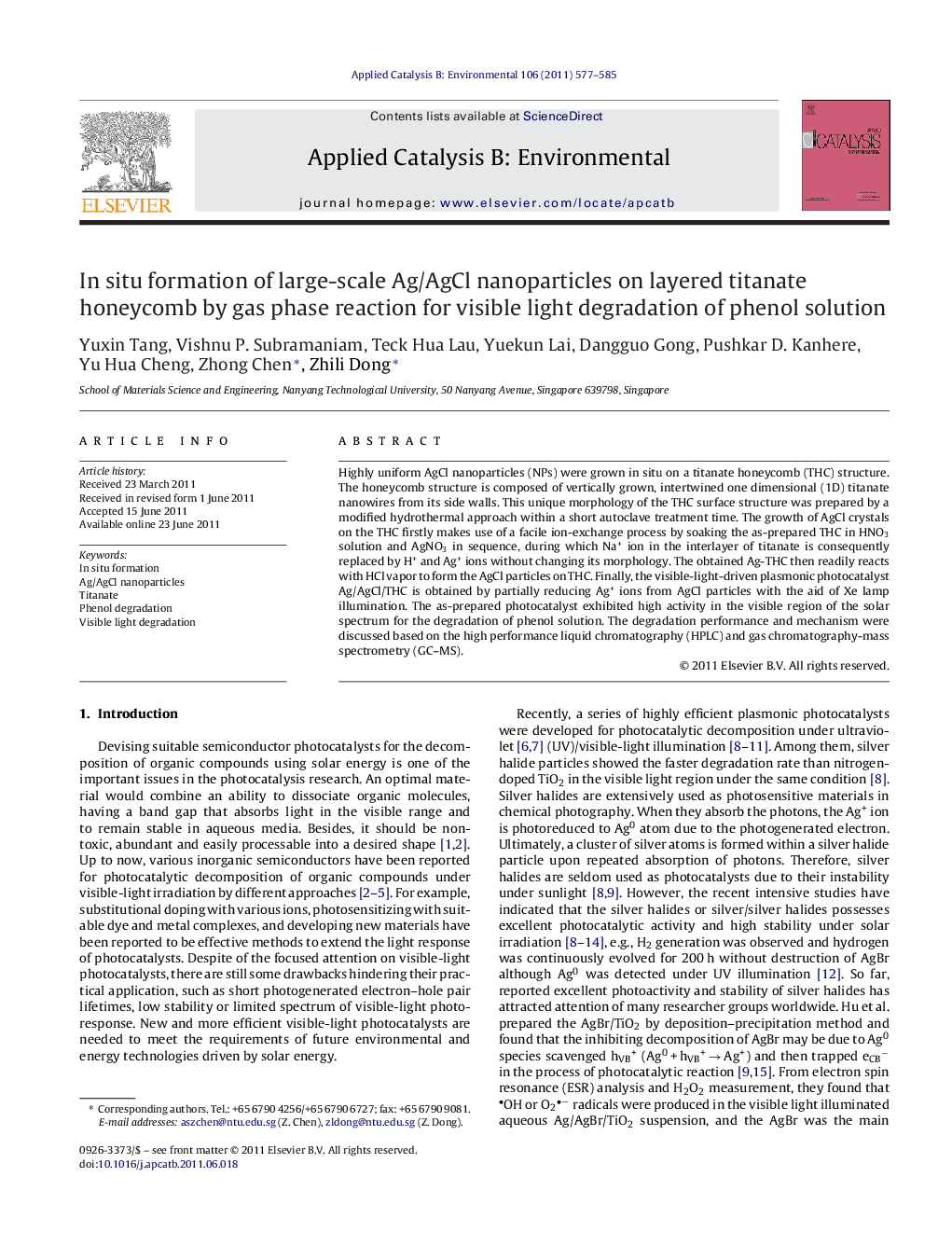| Article ID | Journal | Published Year | Pages | File Type |
|---|---|---|---|---|
| 46936 | Applied Catalysis B: Environmental | 2011 | 9 Pages |
Highly uniform AgCl nanoparticles (NPs) were grown in situ on a titanate honeycomb (THC) structure. The honeycomb structure is composed of vertically grown, intertwined one dimensional (1D) titanate nanowires from its side walls. This unique morphology of the THC surface structure was prepared by a modified hydrothermal approach within a short autoclave treatment time. The growth of AgCl crystals on the THC firstly makes use of a facile ion-exchange process by soaking the as-prepared THC in HNO3 solution and AgNO3 in sequence, during which Na+ ion in the interlayer of titanate is consequently replaced by H+ and Ag+ ions without changing its morphology. The obtained Ag-THC then readily reacts with HCl vapor to form the AgCl particles on THC. Finally, the visible-light-driven plasmonic photocatalyst Ag/AgCl/THC is obtained by partially reducing Ag+ ions from AgCl particles with the aid of Xe lamp illumination. The as-prepared photocatalyst exhibited high activity in the visible region of the solar spectrum for the degradation of phenol solution. The degradation performance and mechanism were discussed based on the high performance liquid chromatography (HPLC) and gas chromatography-mass spectrometry (GC–MS).
Graphical abstractFigure optionsDownload full-size imageDownload as PowerPoint slideHighlights• In situ formation of large-scale and uniformly distributed Ag/AgCl nanoparticles on titanate honeycomb (THC) surface nanostructures. • The formation of uniform and dense AgCl nanoparticles on THC is by a facile technique combining ion-exchange and vapor phase reaction. • The Ag/AgCl/THC plasmonic photocatalysts are grown on a substrate so there is no concern about the catalyst separation as in the particle system. • The degradation mechanism of phenol is discussed based on the high performance liquid chromatography and gas chromatography–mass spectrometry.
